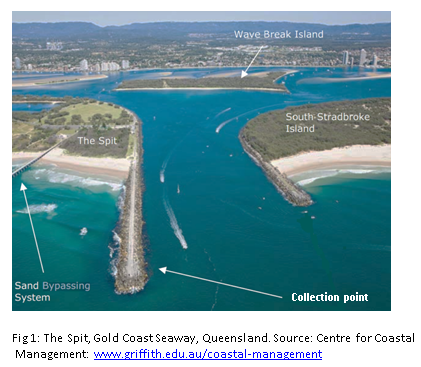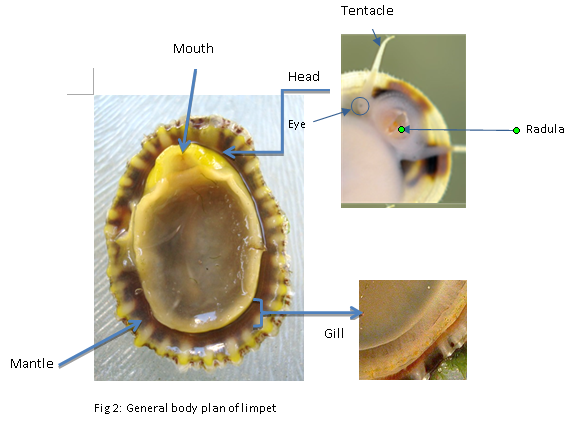Physical Description
C.tramoserica are often living on bare rocks in a high density of community structures. They are exclusively found at the littoral zones as the below (Fig. 1) The Spit, at the Gold Coast Seaway. The geographical feature of The Spit is a deposition landform by accumulative sediments with sand and pebbles. One end is attached to the land and the other end (the nose) projecting into the Gold Coast Seaway.
The edge of nose is built by concrete rocky walls as providing defensive mechanisms over the erosive power from strong waves and winds in the ocean. The rock substrates have subsequently become diverse ecological habitats for vegetated invertebrate and sessile species. C. tramoserica live aggregately on the exposed rocky shores as well as endure the strong wave action, wind speed and tidal cycle effect.
Sexual maturity of C. tramoserica is approximately 24mm in length; adult size can be up to 50-60mm. One of unique identifications is the colourations of radial shell which comprise with yellow, pink or brown, and has ribs in reddish or orange.
Different sizes of limpet are also determined by the structure of radulae. The radular teeth in the large limpets are longer and more widely spaced than the small one. However, the small limpets consider containing a feeding advantage in relation to intraspecific competition due to greater capabilities in grazing food particles within pits on the rock surface (Marshall & Keough,1994).
Limpets eat as they go! Mouth is widely opened with radular teeth to search and scrape food off the substrate. The elongated tentacles functioned as detecting surrounding predators (ie. starfish/crabs) whilst feeding. Eyes are located at the base of each tentacle but have less visualising capabilities in term of food search compared with the greater sensibility of the radula (Beatty et al, 2001).
The respiration is through gills underneath the edge of the mantle cavity. Water is drawn under the edge of the mantle and over the gills in order to extract oxygen. The water also associates with flushing waste materials when being passed back out under the shell.


|